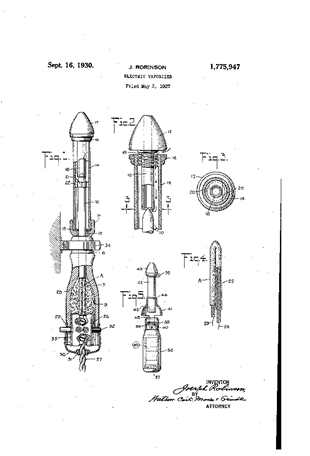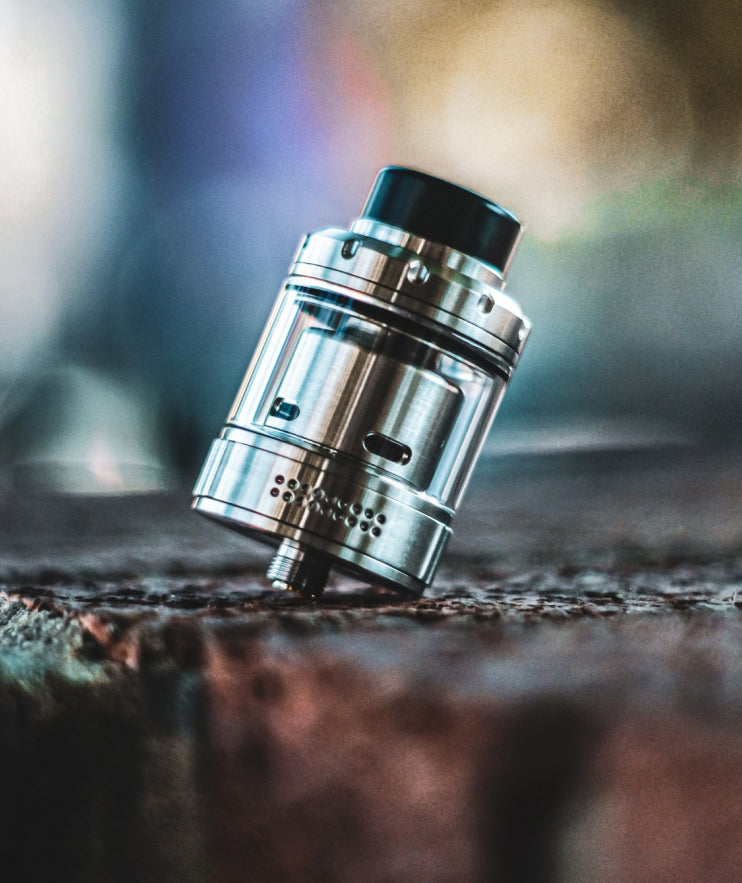There is a rapid increase in the number of vapers around the globe, with Euromonitor estimating it to reach 55 million by 2021—a huge leap from the 7 million global vapers in 2011. The vaping industry itself is predicted to grow to $61.4 billion (£46.21 billion) by 2025.

Source: Euromonitor
Although vaping only started to gain mainstream traction in the past decade (the Oxford Dictionary even announced “vape” as their Word of Year in 2014) this technique has a long history that dates back to ancient times.
History of Vaping
Vaping, regardless of the method or device used, is the act of inhaling and exhaling vapour produced by heat applied to ingredients without burning them. In ancient Egyptian times, this took the form of hot stones that vaporised hemp seeds, resulting in a pleasant-smelling vapour.
About a thousand years later, Irfan Shiekh, who lived during the Mogul’s Safavid Dynasty in present-day Afghanistan, invented the hookah. The Moguls then brought this to India (however, the Indians were already using a similar device called the chillum).
These ancient techniques paved the way for modern humans to turn to vaping as an alternative way of smoking nicotine.
A Series of Patents
Before the modern e-cigarette came into existence, it went through a series of patents filed by a number of inventors—all of which had varying degrees of success when it comes to taking the product to market:
- 1930 – In 1927, John Robinson filed the first patent for an electric vaporiser, which was then granted in 1930. Robinson, however, never created any prototype. He also stated that his invention was created to hold and heat medicinal compounds to produce vapours for inhalation.

Source: Google Patents
- 1963 – Herbert Gilbert filed the patent for a smokeless non-tobacco cigarette in 1963 (granted in 1965), stemming from his desire to curb his smoking addiction. This design is widely accepted as the first electronic cigarette, which produced a flavoured steam without needing nicotine. However, big tobacco industries dominated the early ‘60s—the era when smoking was considered sophisticated and cool without considering its ill effects. With tobacco advertising present everywhere, Gilbert’s creation didn’t reach mainstream consciousness.

Source: Google Patents
- 1980s – Phil Ray, credited for inventing the microprocessor, also worked on curbing his smoking addiction by inventing a device that allowed users to inhale nicotine using a device that does away with combustion. This took the form of a nicotine-soaked paper inside a cigarette-like plastic device. When he partnered with Dr Norman Jacobson, they were able to sell their product in Western US, advertising it as a “smoke-free cigarette.” Although the business did not succeed (ultimately failing due to the short shelf life of the device and no FDA approval), Ray and Jacobson were credited to be the first users of the terms “vaping” and “vape.”
- 1990s – In Europe, Frank William Wood a.k.a. Eagle Bill Amato (a Dutch resident but American born) became known as the father of the cannabis vaporiser. He invented the first portable vaporiser called the “Eagle Bill Shake & Vape”, which was inspired by ancient Egyptian techniques. For over a decade, his invention was a favoured exhibit at the Hash Museum in Amsterdam.

Source: Herb.co
- 1994 – Taking inspiration from Bill Amato’s design, Canada-based BC Vaporizer created the first electrically-charged vaporiser. The company is still running today. About a decade later, German company Storz & Bickel created the “Volcano”, a desktop vaporiser.
Birth of the Modern E-Cigarette
The design and creation of modern-day e-cigarette is attributed to Chinese pharmacist Hon Lik. He started working on a device that would deliver nicotine in vapour form in 2001, which he then patented in 2003.
Similar to Gilbert and Ray, Hon Lik’s smoking addiction led to his invention. He also watched his own father succumb to lung cancer due to his smoking habits.
The difference between Hon Lik’s design and the e-cig that we know today is that the former lacked a battery-powered heating element. He, instead, used ultrasonic technology to apply heat to the nicotine solution. He also created e-liquids by performing experiments on various liquids that can both hold nicotine and produce vapour.

Source: Google Patents
In 2004, his design hit the Chinese market via Ruyan, the company he worked for. It was a huge success, which then led to the introduction of the device in the US and European market in 2007.
In 2013, Netherlands-based Fontem Ventures bought Hon Lik’s patents for $75 million (£56.53 million), He now works for them as a consultant.
Among the early adopters of this technology are brothers Umer and Tariq Sheikh, both hailing from the UK. They invented the early prototype of the cartomizer and launched it in the UK in early 2008. Instead of needing separate pieces, users would now only need one, as a cartomizer features a heating coil within the liquid store. This then allows the device to be filled with e-liquid manually (as opposed to needing a new cartridge).
The Sheikh brothers’ invention led to a number of people modifying the device to fit their preferences, thereby creating a subculture of vapers who prefer e-cig mods.
Controversies, Restrictions, and Regulations
Vaping was, however, not readily accepted by various government bodies, health organisations and scientists. It also sparked multiple debates in the media.
In the years that followed, vaping began to catch on in a big way and along with the mass production of modern e-cigarettes, so too did some research detailing the negative side effects of vaping. There were even a few countries (e.g. Thailand, Singapore, Canada, Australia, etc.) that banned its use.
However, the past decade has seen a massive turnaround in both the perception of vaping and the evidence for its benefits, both from governments and health communities. A number of these studies reinforced what has long been known by many vapers themselves—that vaping can help smokers quit tobacco.
Perhaps one of the most significant was in 2015 when Public Health England started recognising e-cigarettes to be safer than smoking. The American Heart Organization, also echoed this, encouraging the use of e-cigs to successfully quit tobacco smoking.
Additionally, a 2017 landmark study published on the Annals of Internal Medicine, funded by Cancer Research UK concluded that long-term e-cigarettes users had “substantially reduced levels of measured carcinogens and toxins relative to smoking only combustible cigarettes.”.
Current Events
As of 2016, worldwide sales of e-cigarettes have amounted to $11.43 billion
(£8.61 billion) and is expected to have an annual growth rate of 23.25% until 2025.
Data from Euromonitor also showed that, given its year-on-year increase, vapour products are on the verge of taking over other tobacco product categories (aside from cigarettes). By 2025, vapour products are seen to eclipse cigars and smoking tobacco in terms of sales.
Tobacco companies have already taken note of this increase, which may explain why they started buying up e-cigarette companies around a decade ago. Philip Morris International (owner of Marlboro), for one, saw a400% increase in their e-cig sales between 2016 to 2017, while British American Tobacco (owner of Lucky Strike) expect their alternative cigarette products to grow to£5 billion by 2022.
The Rise of Vaping in the UK
Since the vaping industry entered the UK market, it has been on a steady rise both in terms of sales and number of users. What began as products sold by independent retailers has now grown into a sector that sees even the biggest manufacturers as major players.
Despite the country’s ban on cigarette ads way back in 1965 the first e-cigarette commercial aired on British television in 2014, depicting a woman exhaling vapour and promoting e-cigarettes. TheUK also currently holds the title of the second largest market for vaping devices next to the US.
UK Rules on Vaping
In 2014, those who are under the age of 18 were banned from purchasing electronic cigarettes, as experts fear that it encourages teenagers to pick up a smoking habit. Retailers can be fined up to £2,500 if they’re caught selling to those under 18.
This was followed by the European Parliament’s banning of e-cigarette advertising among its member states (applying the same law for tobacco products). Advertisers are also not allowed to align vaping products as beneficial to users’ health.
In May 2017, the UK published a new vaping law which includes the following changes:
- Vape tanks are limited to 2 ml
- One e-liquid container should be restricted to 10 ml
- One e-liquid container should only have a nicotine strength of 20mg/ml
- Package e-liquids to be child-resistant
- Ban colouring, caffeine, and taurine as ingredients
- Proper labelling (ingredients, health risks, potential side effects)
- All e-cigs and e-liquids must be registered to the MHRA before selling
Although the new laws were seen to be positive, there is some concern from smokers trying to quit the habit, who are worried that 20mg/ml of nicotine may not be enough to curb their cravings, leading some to return to smoking tobacco.
Just recently, the police issued a warning against drivers who vape, as this can be considered distracting. If caught, it may lead to a £2,500 fine and a driving ban.
Although there is still some uncertainty about UK vaping laws in a post-Brexit world, some scenarios would see the UK no longer obligated to implement the EU’s revised Tobacco Products Directive (TPD2) regulating e-cigarettes in the same way as tobacco. Some believe this could provide an opportunity to re-examine current EU rules on vapour products. This may include removing vaping bans in the workplace or public spaces, as well as encouraging the adoption of e-cigs (since they won’t be lumped together with tobacco products anymore).
Current Vaping Statistics in the UK

Source: Blu
According to Action on Smoking and Health (ASH), e-cig users have increased to almost 3 million in 2017, up from 700,000 in 2012.
Source: ONS
Data from the Office of National Statistics showed that the majority of vapers in the country choose e-cigarettes, as these devices are perceived to be less harmful than cigarettes.
The ONS also found that there has been a steady decline in the number of smokers in the UK since 1974, reaching its lowest point in 2015. Current data shows that 17.2% of adults in the UK smoke, as opposed to 20.1% in 2010.
Thanks to more studies that demonstrate the positive effects of e-cigs, Public Health England has also been pushing for its use, even going as far as calling hospitals to prescribe the device to patients who want to quit smoking.
Rough Road, Bright Future
Although it started from modest beginnings, even having a long history of unsuccessful patents and designs, the e-cig industry has become one of the most promising technologies in terms of tobacco harm reduction. It has been adopted by millions of users worldwide, and studies continue to be published regarding its health benefits.




















